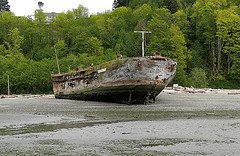Strategic Selling in a Tough Economy – How No Becomes Yes
Strategic Selling in a Tough Economy – How No Becomes Yes
When a tough economy takes the first tentative steps toward recovery, the ice surrounding a customer’s reluctance slowly begins to melt. A professional salesperson knows how to craft an irresistible, value-packed offering when budgets are tight and prospects are still overly cautious about their spending.
The antiquated view of selling is that an “all or nothing” approach is the only sure pathway to success. The salesperson determines which products or services are most likely to generate a high rate of closed sales in his or her territory, and a hard-sell “features and benefits” script is built around those products and services. The salesperson becomes determined to handle objections, wear down resistance, and close the sale.
A hard sell never works in a tough economy. A prospect faced with the tired “What are the consequences of your not buying today” question might very well respond with “I’ll still have my money.”
Two rules hold fast and true in any economy, weak or strong.
The first rule is that when a prospect verbalizes a need or desire, the sale has already been made. The experienced salesperson recognizes this, and calmly works with the prospect as they seek reassurance that they have made the right decision, that the need or desire is valid and necessary, and that the salesperson can be trusted to provide it. The novice salesperson does not, and sticks closely to their prepared script, and more often than not, fails to close the sale.
The second rule is that no salesperson, whether they are seasoned or just beginning, can advance the sales cycle toward closure until a prospect’s need or desire has been identified and articulated by the prospect. There is no “features and benefits” slideshow presentation in the world that can change this truism.
The professional salesperson has greater success with more initial contacts via the first rule for one simple reason: They do their homework. Their research uncovers prospects with a predisposition to the benefits offered by their products and services. While this research does not offer a 100% guarantee of success with all prospects, it greatly increases the potential for success. The salesperson makes initial contact a professional with a basic understanding of their prospect’s needs. They avoid the jarring, self-defeating “cold call” approach.
Once the need or desire has been expressed by the prospect, the salesperson comes to a fork in the road. If the prospect is successful and is not feeling the pressure of a tough economy, they can follow the straight path and work toward their most desired, most profitable sale. If the prospect is facing financial challenges or simply not willing to spend, they can “Head East or Head West.”
The “Head East” approach is adopted by inexperienced salespeople who lack the necessary skills and confidence to calmly work through the entire sales cycle on a client-by-client basis, rather than a rigid adherence to a script. When cost becomes a factor, they see cost as an objection, and attempt to counter that objection with a number of ill-conceived responses. They might offer a deep discount, which cuts directly into their bottom line profits. They might offer a volume discount, which results in a larger immediate sale but creates a closed sale based on a lower profit margin, which is a sign of compromise, not success. A salesperson can never give more in terms of product or service or accept less in terms of compensation and consider their efforts to be successful.
The “Head East” salesperson will also attempt to assign value to low-or-no-cost “incentives” such as giveaway items, white papers, extended warranties and other products or services which do not represent a significant cost to the salesperson but also, by default, fail to impress the prospect. A full-price ticket cannot be padded with low-value items. The prospect will ultimately return to the bottom line price and will weigh the so-called “extra” value of these items. They will then question the value of the main product or service, seeing the “add-ons” as a desperate move on the part of the salesperson.
The “Head West” approach is adopted by experienced, professional salespeople. Once a need or desire has been articulated by the prospect, and it is clear that the salesperson’s product would help fill the need or meet the desire, the salesperson moves into “How can we make this happen?” mode.
As an example, a professional Website developed for an organization might cost $ 3500. This Website might include photographs of all staff members in the organization with brief biographies, relevant video which illustrates the core values of the organization, a detailed overview of the organization’s history, and any number of interactive elements. The prospect’s initial reaction might be that they like the proposal but can’t afford the $ 3500.
If the salesperson has reasonably quoted this project at $ 3500, a discount would represent full value for a less than fair price. If the organization reviews the proposal and feels that it represents an Internet marketing presence they would like to ultimately have, but cannot afford today, a much better approach would be to determine what they can afford, make it happen today, and adopt a phased approach toward “growing them into” where they would ultimately like to be in six months, a year, or longer.
This objective could be met with a group photo of the staff today, to be replaced with individual photos in a year. Video could be moved to the second or third phase of the project. The salesperson would then work with the prospect to identify the most urgent need in the present moment, and would offer solutions to meet that need. The Website would rise to meet the level of the prospect’s current need and budget, rather than lowering the price of the full-featured Website to win the favor of a prospect who cannot afford it.
Salespeople who adopt the “Head West” approach retain the respect of their customers for two key reasons. First, they don’t back down from the full value of what they offer, and thereby avoid creating suspicion or skepticism in the minds of their customers regarding that value. Second, they exhibit a willingness to build a long-term relationship with their customers by exploring every avenue toward meeting their needs today.
The “Head West” approach is not a compromise. It is a lower ticket immediate sale, but the price on the ticket is at full value. It greatly increases the chances of the customer engaging in future sales. It is a formula for success. Customers always appreciate flexibility and a willingness to work within their own unique arena of challenges and opportunities.
The ability to employ fast and agile thinking is what separates the professional salesperson from the beginner. When you meet with prospects who are feeling the pinch of a down economy, try the “Head West” approach and watch your sales increase dramatically.
Michael DeAngelis is the Managing Principal of Michele Productions, a Silicon Valley firm specializing in Strategic Marketing Solutions that include Web Site Design, Digital Photography, and Desktop Publishing. You may contact him via his company’s Web Site, http://www.micheleprod.com.
Article Source:
http://EzineArticles.com/?expert=Michael_DeAngelis_Jr
'Moonlight and Magnolias' at Golden Apple Dinner Theatre in Sarasota: review
Donna DesIsles/PUBLICITY PHOTO It's unlikely the screenplay for "Gone with the Wind," the longest film to ever win the best picture Oscar, took a mere five days to write. But that's the brilliant conceit of Ron Hutchinson's not always brilliant comedy, …
Read more on Bradenton Herald
Digicamera Cash
Get This E-book On How To Make Money From Your Digital Camera. It Is Fun And Easy To Do. So Go On And Make Some Money Today.
Digicamera Cash
Bioshock 2
- Online and offline multiplayer modes including: Free-For-All, and Team Death Match and more.
- Return to the underwater city of Rapture where now the ‘The Big Sister’ is the toughest creature around.
- Play as the original the Big Daddy as you harness raw strength to battle Rapture?s most feared denizens as you battle powerful new enemies.
- New game mechanics including the ability to wield plasmids and weapons simultaneously; flashback missions detailing how you became the Big Daddy
- New game environments including Fontaine Futuristics, headquarters of Fontaine’s business empire and the Kashmir Restaurant.
New Page 1Product InformationBioShock 2 is a first-person shooter set in the fictional underwatercity of Rapture. As in the original game BioShock 2 features a blend offast-paced action exploration and puzzle-solving as players follow varyingpaths through the overarching storyline based on the decisions that they areforced to make at various points in the game. In addition to a further fleshingout of the franchise’s popular storyline players can look forward to newcharacters game mechanics weapo
List Price: $ 19.99
Price: $ 5.09
Google Tech Talk October 26, 2010 Presented by Gabe Zichermann. ABSTRACT Gamification is fundamentally rewriting the rules of engagement for product design and marketing. From Foursquare to Farmville and from Nike to the Navy, game mechanics like points, badges, levels, challenges, rewards and leaderboards are being used in ever greater numbers. But what does this mean for “traditional” marketing & UI/UX and how do you leverage this trend in your engagement strategy? Moreover, how do we measure success, and why will every company have a Chief Engagement Officer in the next few years? Find out more in this in-depth discussion with Gamification Expert, Gabe Zichermann — author of “Game-Based Marketing” and the Gamification.co blog, and Chair of the Gamification Summit. GABE ZICHERMANN is an author, highly rated public speaker and serial entrepreneur. His most recent book,Game-Based Marketing (Wiley, 4/2010) has achieved critical and industry acclaim for its detailed look at innovators who blend the power of games with brand strategy. His next book on game mechanics is a detailed technical look at architecture and implementation. Gabe is also the Chair of the Gamification Workshops and Summit, upcoming events that bring together the leading minds in Gamification and Engagement Science – gsummit.com. A resident of NYC, Gabe is a board member of StartOut.org, advisor to a number of startups and Facilitator for the NYC chapter of the Founder Institute.



